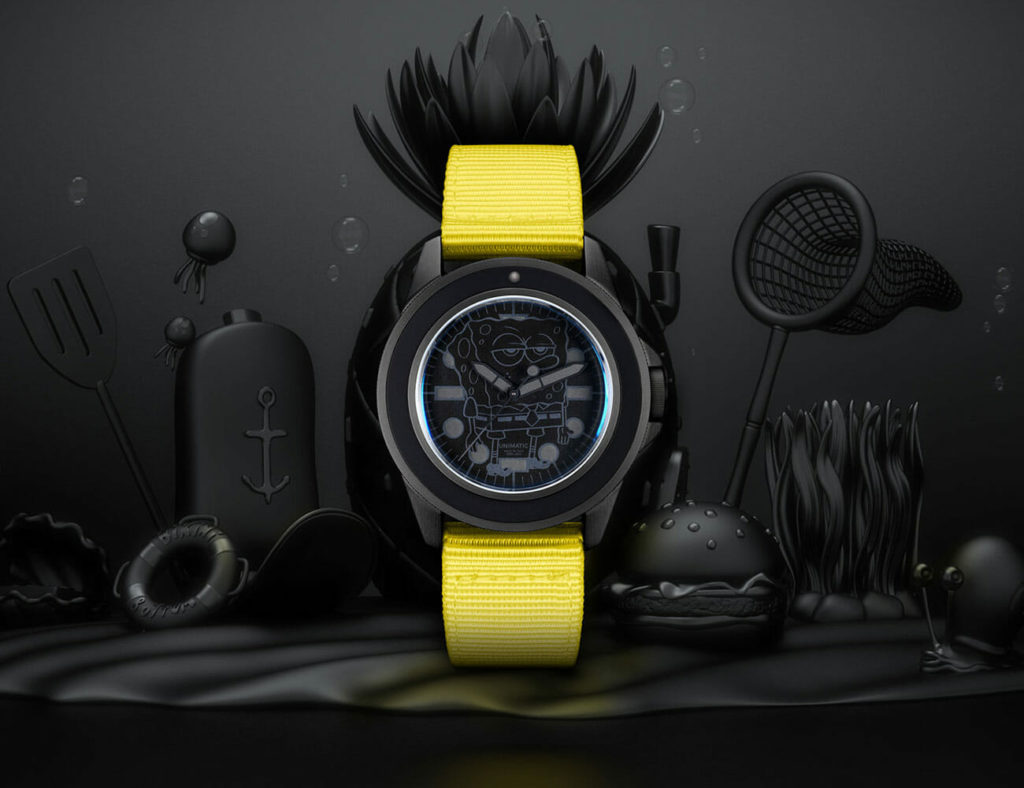Giovanni Moro co-founded Unimatic watches, in his own words, “as one-hundred percent a game.” He and co-founder Simone Nunziato had formed a friendship as industrial design students at Politecnico di Milano, buying vintage watches together on eBay. “Cheap ones,” he says. “We didn’t have much money.” A few years later, Moro designed a watch for fun while working as a designer at a furniture company. But it wasn’t quite right, and he sold the design. The next time around, in 2015, he hit up Nunziato to design a watch together.
“We didn’t have a business plan,” he says. “Didn’t know what we were going into. We just said, ‘Let’s put small money into the watch design that we always had in mind.’”
The watch they had in mind, the Modello Uno U1-A, was a slim, 40mm diver with a flat black dial, lumed hour markers in the shapes of circles, rectangles, and triangles, and a black bezel insert marked by sixty lines, “15,” “30,” and “45”-minute indices, and a single lumed dot. It had a Seiko movement and cost 450 Euros. There wasn’t much else to it, and it sold like hotcakes. Their next model, the U1-B (see the updated version here), had even less going on — it dropped the bezel markers except for the lumed dot.
Today, Unimatic has released 39 models, and though it produces less than 3,000 pieces a year, Moro’s brand is among the most popular and sought-after watch microbrands in the world. We talked with Moro about how he got into watches, Unimatic’s design approach, and a new watch featuring the resident of a certain pineapple under the sea…
[This interview has been edited for length and clarity]
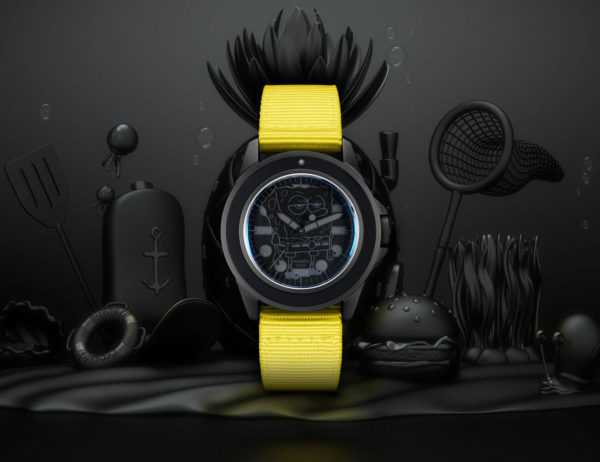
The infamous blacked-out model U1-SS featuring a certain submarine pineapple-dweller Photo by Unimatic Watches.
Q: What was the first watch you owned?
A: I wouldn’t describe my father as a proper watch collector, but he liked watches. I lost my father when I was eleven, and I remember all of the watches he bought, maybe one per year. He bought a steel and gold Hublot, and an IWC Perpetual Calendar that was a very loud kind of watch. Then, when I was a teen, I received a couple of Swatches. They were the hot item back in the day. I still have those: a chronograph, a SCUBA. Very colorful, very cheap. Good for a young guy.
When I went to university, I started buying some very affordable vintage Seikos. Back in the day, you could buy a 6309 for very small amount of money. Not exactly collector grade—but I didn’t care. I got a Seiko SKX007, and one Grand Seiko for very little money. In a way, this is why we went for Seiko movements [in Unimatic watches]. It’s because of all the Seiko love I had when I was a young guy.
“We didn’t have a business plan. Didn’t know what we were going into. We just said, ‘Let’s put small money into the watch design that we always had in mind.’”
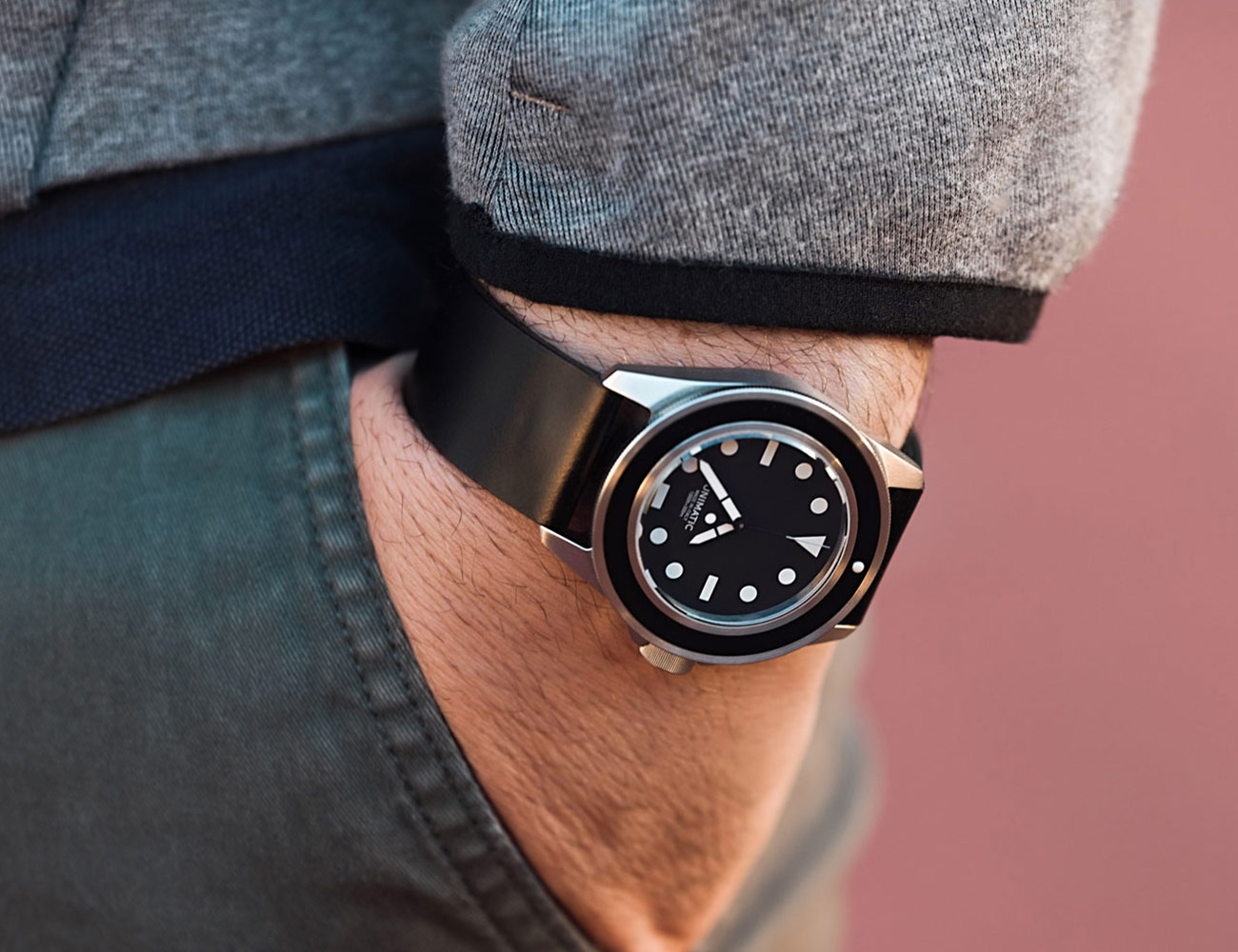
The model U1-FM, an edition of 400 pieces, features a bezel with only a lume pip at 12 o’clock and no other markings Photo by Unimatic Watches.
I do remember my first important — I mean expensive — watch. When I started working at the furniture studio, I saved for a couple months, and bought an Omega Speedmaster. It’s still in my collection, and I’ll keep it as long as I can. It’s a symbolic watch, the first one I worked for, and felt I deserved it, in a way.
Q: What were your guiding principles when you started Unimatic?
A: We wanted to realize our idea about what a diving watch was — to make it a physical object. Being industrial designers, we had a lot of 3-D models and iterations of how it should look.
The design concepts that lie behind this was to take inspiration, reference or elements from several classic diving watch designs and blend them together inside one watch. It’s quite easy for me to see in the Modelo Uno case: Blancpain, Rolex, and a bezel that looks a bit like an Omega Seamaster 300. We also wanted to mix these, and take off what we didn’t like, like the decoration. We tried to basically clean up everything we could make clean, put everything together in a harmonic way.
“We tried to basically clean up everything that we could make clean, to put everything together in a harmonic way.”
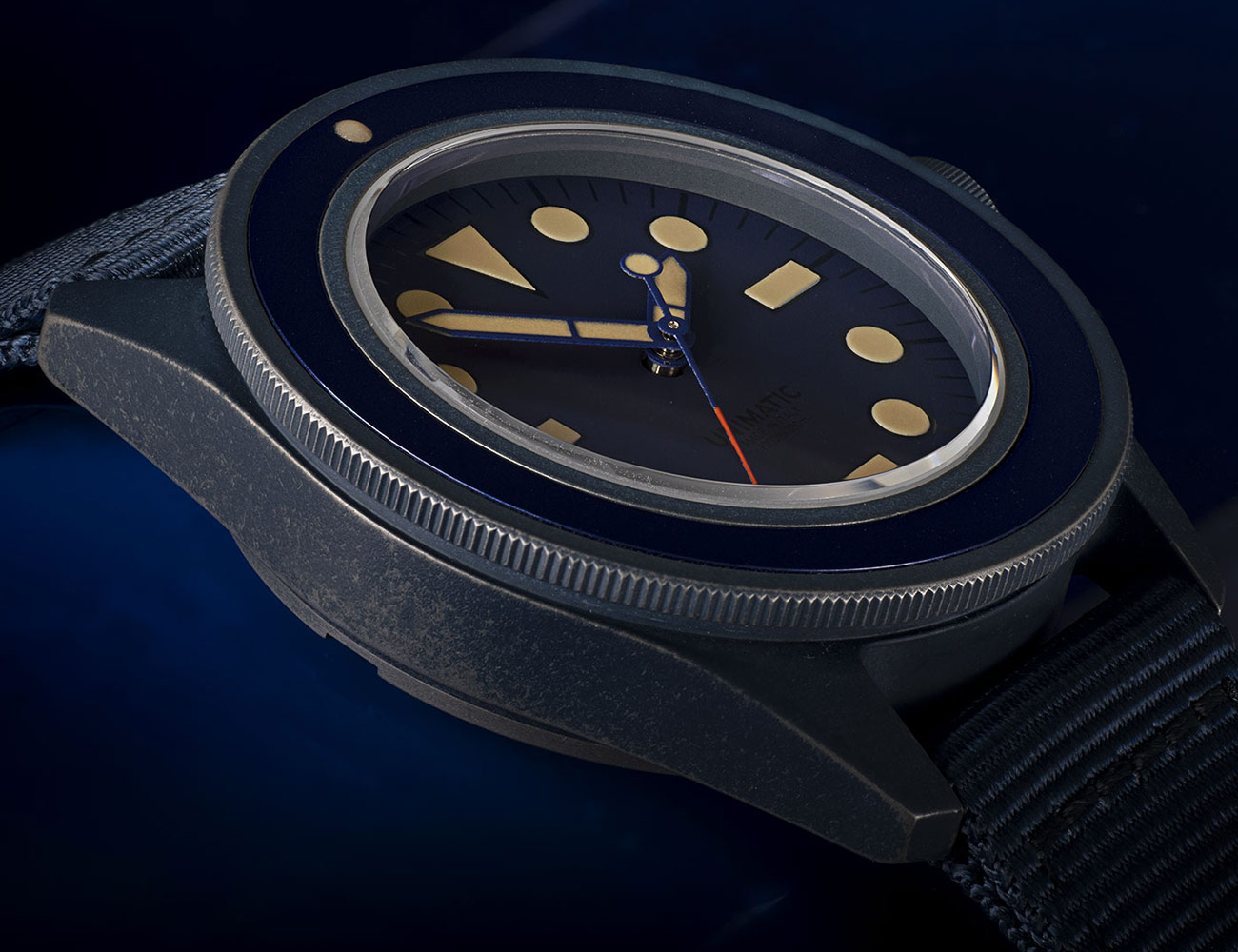
The Modello Uno U1-MY, a limited edition of 50 pieces made in collaboration with Japanese streetwear designer Mihara Yasuhiro Photo by Unimatic Watches.
Q: How did you go about designing something like that?
A: From a designer’s point of view, the dive watch was born for a reason: as a tool. It’s a very accomplished object. To use a metaphor, let’s talk about a hammer. The hammer’s design was perfected over thousands of years. There’s very little you can do to make it better. Maybe paint it better, add some fancy engraving. But still, you end up having a handle and a heavy head above it so that you can put nails in the wall.
In a way, we felt the diving watch was similar. There is very little to invent on a tool watch. Our goal was to make some kind of synthesis of what had been done before, in a modern way, and at a price point that could be accessed by a lot of people.
The design process is for us nowadays always is oriented to how we can take the reference of historical watchmaking and make it more contemporary without adding anything unnecessary. It’s very easy to fake innovation. You can add a dragon on the case, but that doesn’t improve the design of the tool. It’s just adding fancy wallpaper to a wall. And we like the wall. We don’t like the wallpaper.
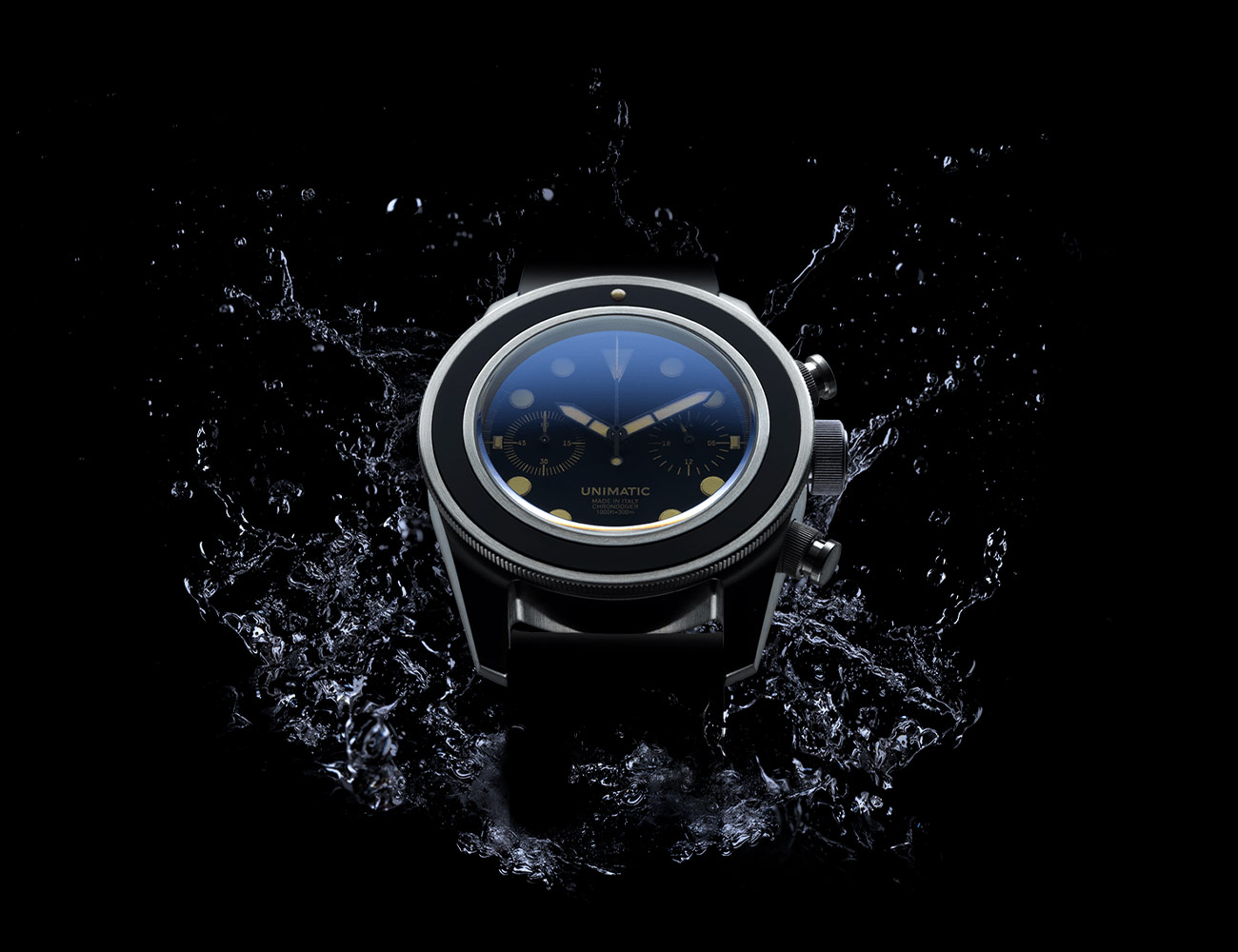
The model U3-A chronograph with Seiko meca-quartz calibre VK64 and “old radium” Super-LumiNovaPhoto by Unimatic Watches.
Q: Let’s talk about the Spongebob watch. It’s so different for you guys. How did that come about?
A: I love Spongebob as a character. Basically, one day, with no expectations at all, I got in touch with Viacom, which owns Spongebob. In this case, we were lucky. They wanted to do it, and they provided the license to us on great conditions.
I said to my partner, “We started this as a game, and we have been lucky. Please, let me play my game.” I wanted to take one step outside of our path. Some people, they see us as this serious, severe kind of brand, and so we sent out this message in the opposite direction. We are the edgy, mysterious company from Italy. But we also do Spongebob.
It’s a way for us to speak to a different audience. For instance, we did a collaboration with a Japanese high fashion brand. We got exposure with a brand that is talking to fashion-minded, avant-garde kind of people. I’m interested in this. Trust me, it’s not because I just want to sell more watches. I like to get in touch with a very different person from who I am, and who sees the world differently than me.
Q: And also, the design of the Spongebob watch is just fantastic.
A: His facial expression is very skeptical of being on a dive watch, looking at you like, “What the fuck am I doing here?” It’s one of my favorite iterations of our design.
Q: “Made in Italy” seems important to your brand. Why?
A: When we started, we met our current supplier by chance. It’s a family company a few kilometers from Milano, where I live. We said, let’s do it here, in Italy. Basically, we strived to be different from what existed. Being made in Italy was a part of that. We could have been yet another Swiss-made small brand, or maybe the only small Italian brand. So we took that road. Honestly, I don’t know if this is a limit or an asset for Unimatic. Swiss-made might have been a higher price point, with better margins and fewer headaches. And we could have done the opposite, made in China. The standards of quality are pretty much the same anywhere you do a watch nowadays.
“We still think of it as a game. If one day we make millions out of it, we will be happy. Otherwise, it’s still been a hell of a fun ride.”
Why did we keep it? Because some people seem to like the exotic component of it. For example, our Japanese customers, they like that we do things in this Italian way — talking bad English, being a little loud or informal. There’s also a component of Italian pride. We think we’re lucky, and that if we were born somewhere else, maybe we wouldn’t have ended up doing this. We think that for the good or the bad, we have a little bit of a different worldview. Like I said, this may or may not be a good thing, business-wise. But we started this as a game, not to become rich. We still think of it as a game. If one day we make millions out of it, we will be happy. Otherwise, it’s still been a hell of a fun ride.
